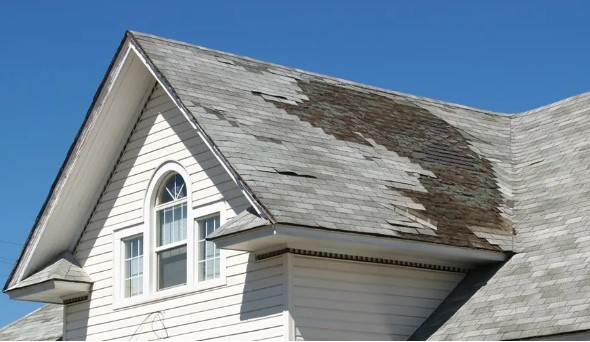Comprehensive Guide to Documenting Roof Damage for Insurance Claims

When severe weather strikes, the roof is one of the most vulnerable parts of any home. Damage from hail, wind, or falling debris can necessitate an insurance claim for repairs or replacement. Properly documenting roof damage ensures your insurance claim is processed smoothly and fairly. We will explore step-by-step how to document roof damage effectively, giving you the best chance of a successful claim.
Initial Assessment and Safety Precautions
Prioritize safety before documenting any damage. Assess the immediate surroundings for hazards such as loose debris or compromised structural integrity. Taking precautionary measures to prevent accidents or further damage is essential before documenting the roof’s condition.
Exterior Inspection
Start your documentation process with a thorough exterior inspection of the roof. Use a ladder to get a close look at the roof’s surface. Look for signs of damage, such as missing shingles, dents, cracks, or holes. Take clear photographs from multiple angles, ensuring that close-ups of the damage and wide shots showing the roof’s overall condition are captured.
Detailing the Damage
When photographing, ensure each image is well-lit and includes identifiable landmarks to establish the roof’s location. Document each type of damage separately, noting any areas where water penetration has occurred. Describe the extent of damage in your notes, including approximate measurements if possible. This detailed documentation will provide evidence of the roof’s condition before repairs are initiated.
Interior Inspection
Roof damage in Spokane Valley WA isn’t always visible from the outside. Conduct a thorough inspection of the interior spaces directly beneath the damaged roof areas. Look for signs of water stains, mold growth, or sagging ceilings. Document these issues with photographs and detailed notes indicating their relation to the exterior damage observed.
Gathering Supporting Documentation
In addition to photographs and notes, gather supporting documentation to strengthen your claim. This may include previous maintenance records, repair receipts, and any correspondence with roofing contractors. These documents can provide a comprehensive history of the roof’s maintenance and repair, supporting your claim for coverage.
Consulting with Professionals
After documenting the damage, consider consulting with a professional roofing contractor or a qualified inspector. Their expertise can provide a detailed assessment of the roof’s condition, further bolstering your insurance claim. Professionals can identify underlying issues that may not be immediately apparent and provide a comprehensive report that aligns with your documentation. This collaboration ensures that all aspects of the roof’s damage are accurately assessed and documented, reinforcing the validity of your insurance claim.
Read also: Signs of Interior Roof Damage
Organizing Your Documentation
Systematically organize all your documentation to facilitate easy access and review by your insurance adjuster. Create a folder or digital file that includes all photographs, notes, and supporting documents related to the roof damage. Label each document clearly, indicating the inspection date and the specific roof area depicted. A well-organized documentation package demonstrates your diligence and commitment to transparency, making it easier for the insurance company to evaluate your claim promptly.
Communicating with Your Insurance Company
Once you have gathered and organized your documentation, promptly contact your insurance company to initiate the claims process. Provide them with a clear and concise summary of the damage, supported by the detailed documentation you have prepared. Be prepared to answer any questions or provide additional information as requested by the insurance adjuster. Maintaining open communication throughout the process can expedite the assessment of your claim and ensure that you receive fair compensation for the roof repairs or replacements needed.
Reviewing Your Insurance Policy
Before finalizing your claim, review your insurance policy to understand the coverage limits, deductibles, and exclusions related to roof damage. Familiarize yourself with any specific requirements or documentation your insurer may need to process the claim smoothly. Knowing your policy details ensures you can effectively provide the necessary information and documentation, avoiding delays or complications in the claims process. If you have any questions or uncertainties about your coverage, don’t hesitate to contact your insurance agent or representative for clarification. Understanding your policy ensures that you can advocate effectively for fair compensation based on the documented damage to your roof.
Effectively documenting roof damage for an insurance claim requires attention to detail and thoroughness. By following the steps outlined—conducting initial safety assessments, thorough exterior, and interior inspections, detailed documentation with photographs and notes, gathering supporting documentation, consulting with professionals, organizing your documentation systematically, and communicating openly with your insurance company—you can significantly enhance the likelihood of a successful insurance claim. Timely and accurate documentation is crucial to ensuring that your insurance provider adequately covers your roof’s necessary repairs or replacement, protecting your home and investment.




